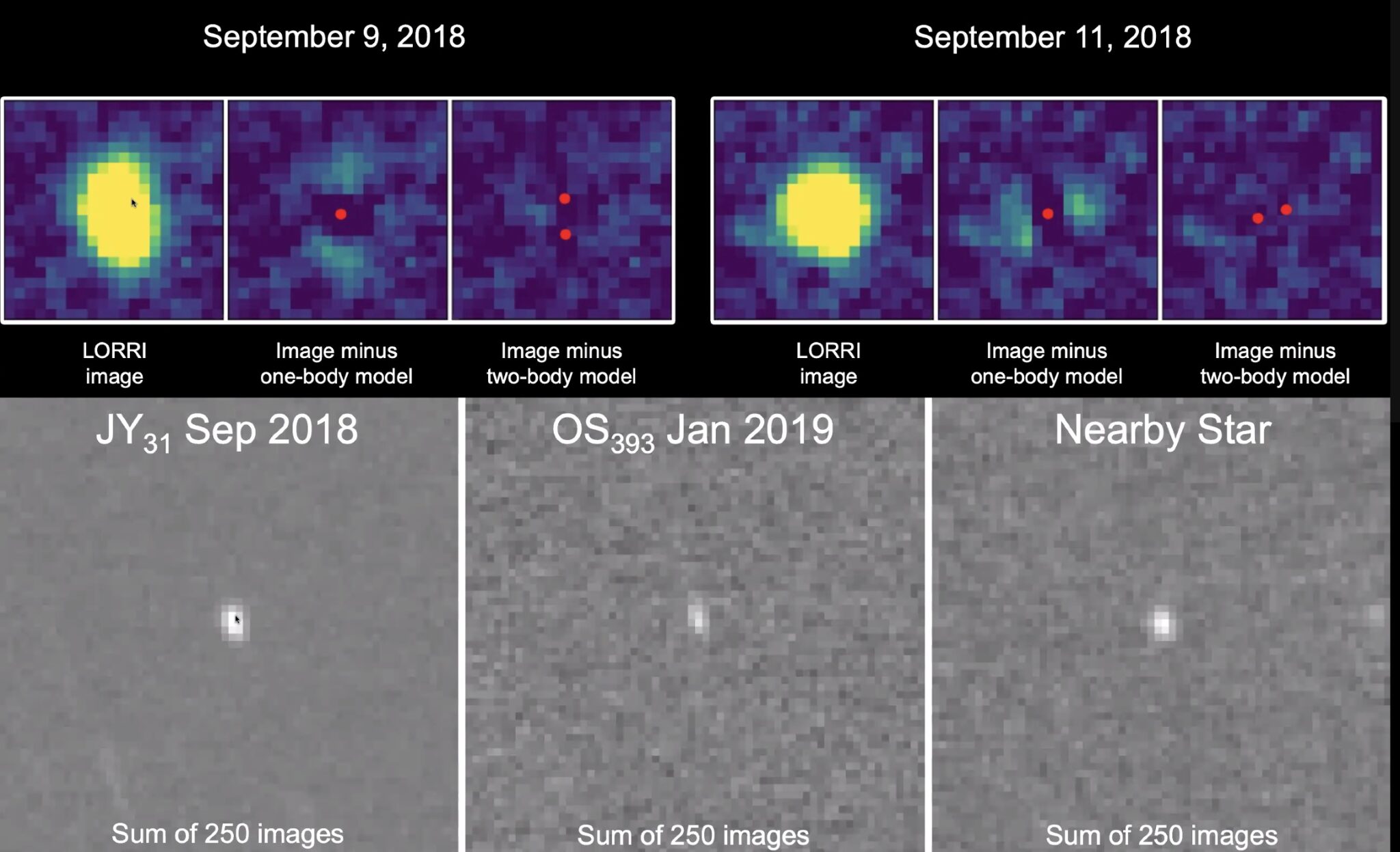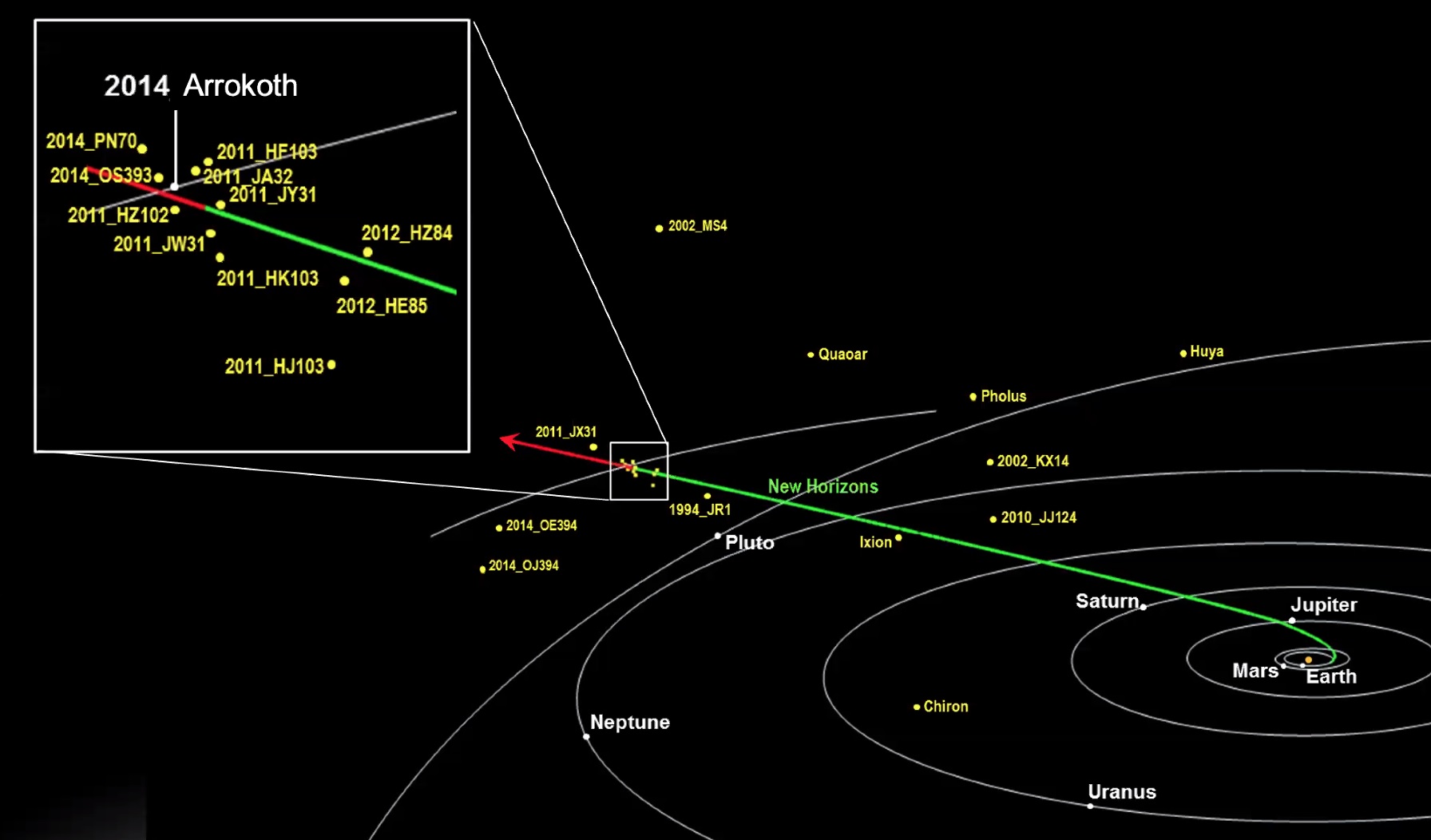https://twitter.com/AlanStern/status/1445818341227040768?t=DZrzzDi9uCmPbr0IweBlZg&s=19&fbclid=IwAR22_yogH9q1YyAX87RBh9_exHppyCw7EKNbPubfcqEVkVZJV9TKEob2P18https://skyandtelescope.org/astronomy-news/new-horizons-discovers-kuiper-belt-twins/New Horizons has spotted two asteroid pairs in the outer solar system. Their existence sheds light on how planets formed.
New Horizons (art)
An artist's conception of New Horizons in the distant solar system.
NASA / JHAPL / SwRI
NASA’s New Horizons is still showing us how bizarre the outer solar system really is. A recent announcement out of the 53rd American Astronomical Society Meeting of the Division of Planetary Sciences demonstrates that two Kuiper Belt objects that the spacecraft's camera homed in on are actually each close binary pairs.
The binary asteroids are named 2011 JY31 and 2014 OS393. Ground-based observatories discovered these objects, then New Horizons’ Long-Range Reconnaissance Imager (LORRI) camera captured them in September 2018, after its Pluto flyby, while it was en route to Arrokoth.

The high-resolution LORRI imager is equivalent to an 8-inch reflector telescope, familiar to many amateur astronomers. To be considered for the study, the objects, when they were targeted,
had to lay within 0.3 astronomical units of the path of New Horizons (where 1 a.u. is the average distance between Earth and the Sun): 2011 JY31 was 0.15 a.u. distant, and 2014 OS393 was just 0.09 a.u. away.
Both 2011 JY31 and 2014 OS393 appeared slightly elongated in the images compared to a nearby star. So the team fit the shapes with a two-body model: two asteroids in a tight orbit. Even though the individual rocks weren't resolved, the modeling showed that two bodies were better able to explain the elongation, as well as the brightness seen. The model for 2011 JY31 had two 50-km-wide objects nearly 200 km apart, while for 2014 OS393, the model had slightly smaller bodies (30 km across) that orbited each other 150 km apart.

===
https://familystar.org.tw/index.php?option=com_smf&Itemid=26&topic=24331.msg214795#msg214795


